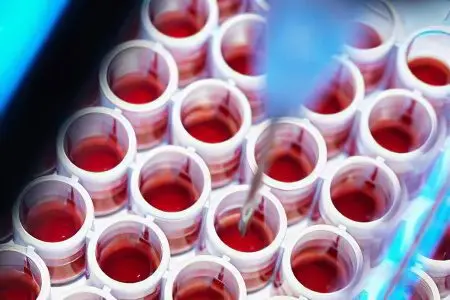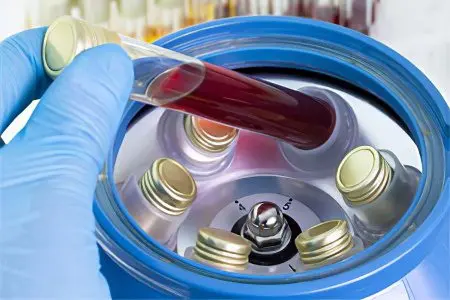Contents
When there is a violation in the liver, certain symptoms occur that indicate a particular pathology. Laboratory tests, often referred to as “liver tests”, also allow enzyme tests to clarify the diagnosis. Of great importance in terms of detecting a particular violation in the liver, is an enzyme such as GGT (GGTP). This abbreviation stands for gamma-glutamyl transpeptidase.
GGT value

In the forms of the performed analyzes, the enzyme gamma-glutamyl transpeptidase is defined as GGT (y-glutamyl transferase) or GGTP (Gamma-glutamyl transpeptidase). This enzyme is involved in the metabolism of amino acids in the body. It can be found in various organs, but most of all it is in the liver, kidneys, pancreas, biliary tract and spleen. It is located in the outer membranes of organs.
GGTP takes part in the process of building protein molecules, stimulates various biological reactions necessary for the life of the body. Therefore, the GGT enzyme is determined during a biochemical blood test, along with such indicators as bilirubin, ALT, AST, alkaline phosphatase.
Attention should be paid to the level of the GGT enzyme when there are symptoms indicating inflammatory processes in the liver, but they are not enough to make an accurate diagnosis. For example, in the early stages of hepatitis. Also, GGT is of no small importance in terms of tracking the dynamics of the development of chronic diseases affecting the liver parenchyma.
How the analysis is carried out, GGT norm indicators
To determine the level of GGT in a person, you will need to take his blood. It is taken in the morning, when the subject has not yet taken food, since after it enters the body, enzymes that can change the blood picture will be included in the work. At the same time, it is important to refrain not only from food, but also from water.
The purity of the experiment is affected by the incubation temperature of the sample, so you can see the indication of the temperature in degrees Celsius in the form. This makes it possible to distinguish normal indicators from pathological indicators obtained at different temperatures.
The values of the norm depend on the age of the person, on his gender. All of them are presented in the table.
A person’s age and gender | Normal value at 37 °C Celsius in U/I (Ед/л) |
|
|
|
|
Newborns in the first 5 days of life | Until 185 |
Children
|
|
It should be taken into account that in the conditions of one laboratory, some reference values can be taken as norm indicators, and in the conditions of another laboratory, slightly different indicators. Therefore, the limits of the norm must be clarified in each specific institution where blood sampling was performed. Although, as a rule, there is no significant discrepancy in these indications.
Increase and decrease in GGT

If a person has a decrease in the enzyme under study, then this can indicate only one single condition – decompensated cirrhosis of the liver.
An increase in GGT, on the contrary, is observed against the background of various pathological conditions, including:
Obstructive jaundice against the background of blockage of the bile ducts. Also, the patient will have increased alkaline phosphatase and 5-nucleotidase.
Cholecystitis.
Cholelithiasis.
Viral hepatitis in the herd of exacerbation. At the same time, the indicators of ALT and AST will decrease.
Compensated cirrhosis of the liver.
chronic hepatitis.
Damage to the liver against the background of intoxication of the body, or with its radiation.
Cirrhosis of the liver caused by alcoholism.
Fatty hepatosis of the liver.
Cancer lesions of the liver, or penetration into the organ of metastasis from a tumor of a different localization.
Amyloidosis and chronic glomerulonephritis.
Myocardial infarction, starting from the 4th day of the disease. The enzyme will reach its maximum values at 2-3 weeks after a heart attack has occurred. The content of the enzyme in the blood increases due to the fact that the body starts mechanisms aimed at its own recovery.
Alcohol abuse. After a complete rejection of alcohol, the indicators will return to normal, but this will happen no earlier than in 14-21 days.
Taking Phenobarbital or Phenytoin to treat epilepsy.
Rafampicin for the treatment of tuberculosis.
Taking hormonal contraceptives.
Taking drugs that can have a damaging effect on the liver parenchyma: steroids, thiazide diuretics, antidepressants, cytostatics, anti-tuberculosis drugs, anticonvulsants, anabolics, thyreostatic drugs.
GGT increases due to damage to the liver parenchyma and bile ducts. A wide variety of factors that adversely affect the health of the organ are capable of leading to a jump in the enzyme. Also, the level of GGT indicates the degree of alcoholic liver damage, as well as the course of chronic liver diseases.
Results
The liver is an intermediary between the gastrointestinal tract, into which various substances enter, and the human body as a whole. The liver is the organ that is directly involved in metabolism.
Liver enzymes ALT, GGT, AST help it cope with various harmful substances, neutralizing them. As long as the liver is healthy, people do not seek to help it maintain its normal state. They begin to pay attention to the organ only after it is affected to one degree or another. Up to that point in time, a person has been poisoning his liver for many years.
With an increase in liver tests and enzymes, you should think about your state of health and continue the examination in order to try to eliminate the pathology in time.









